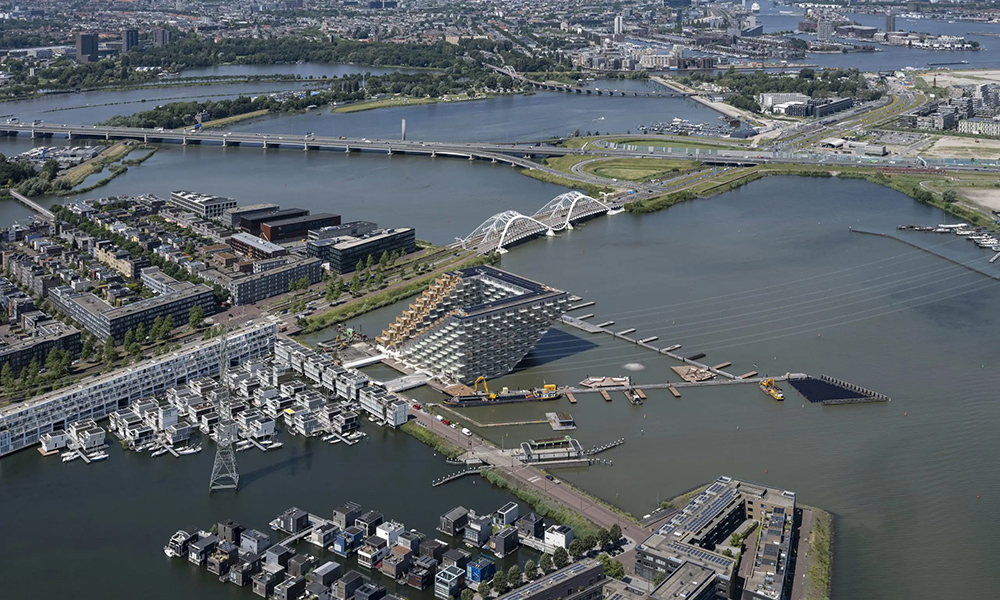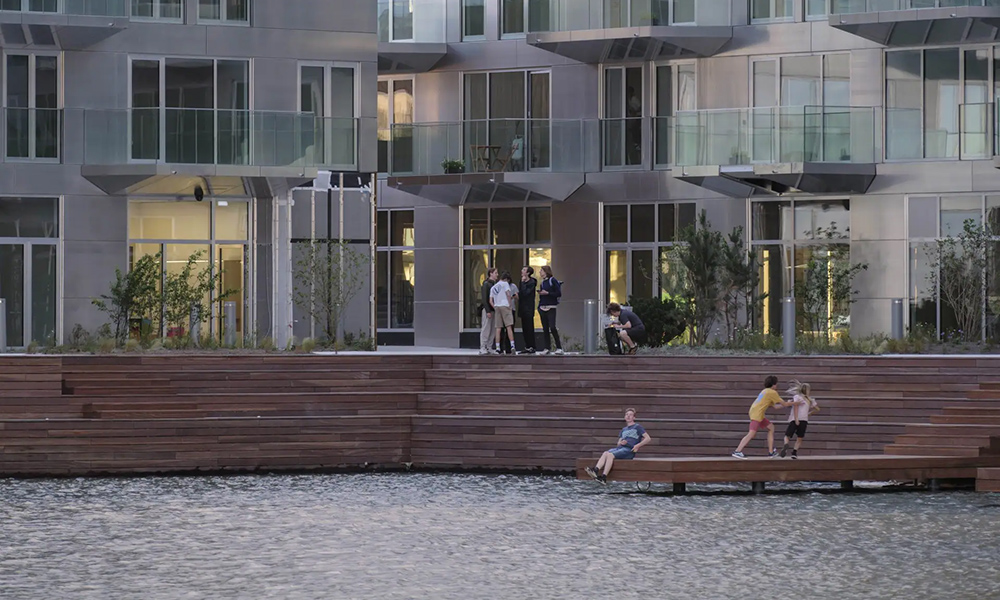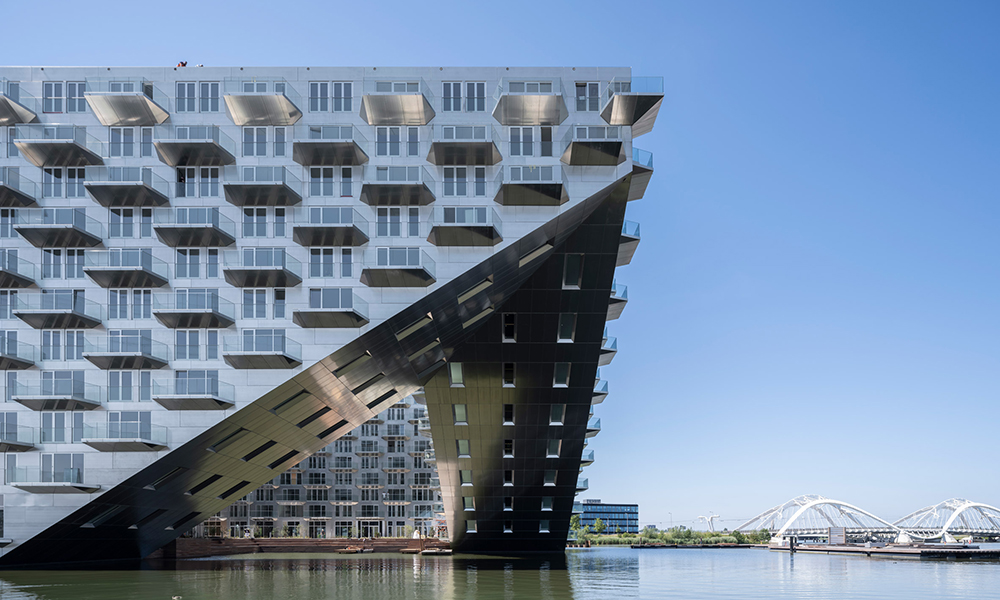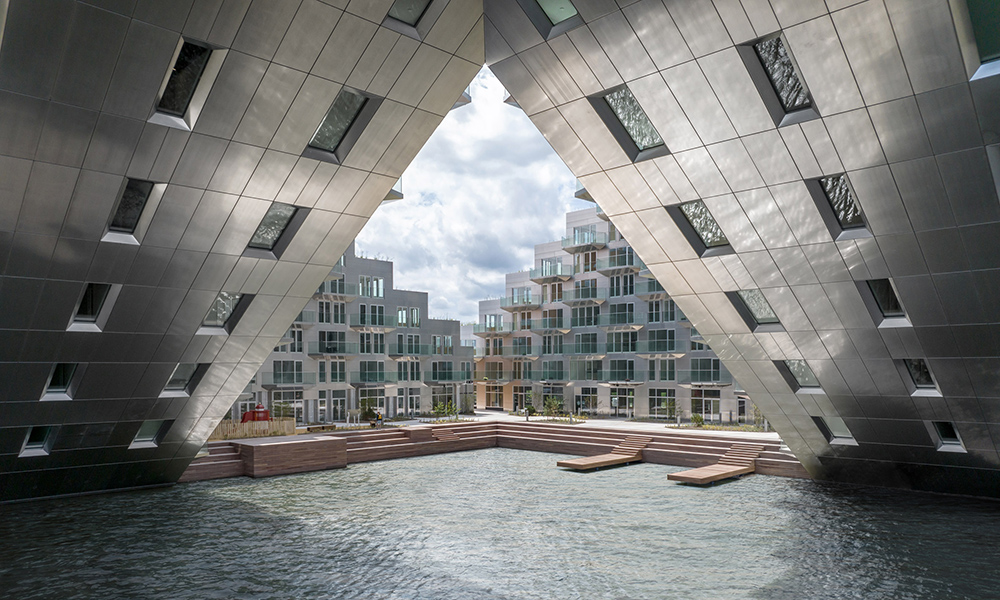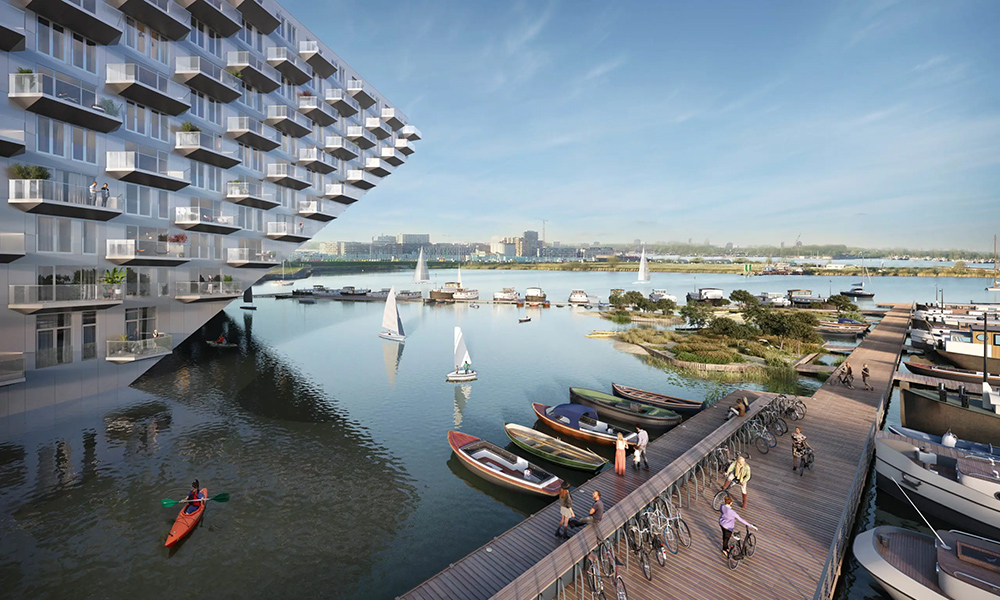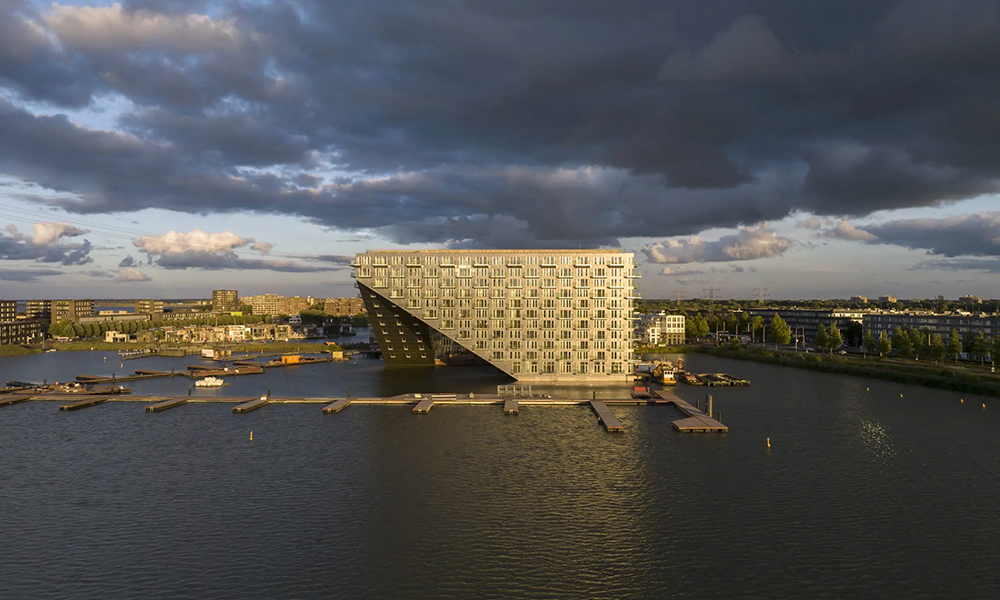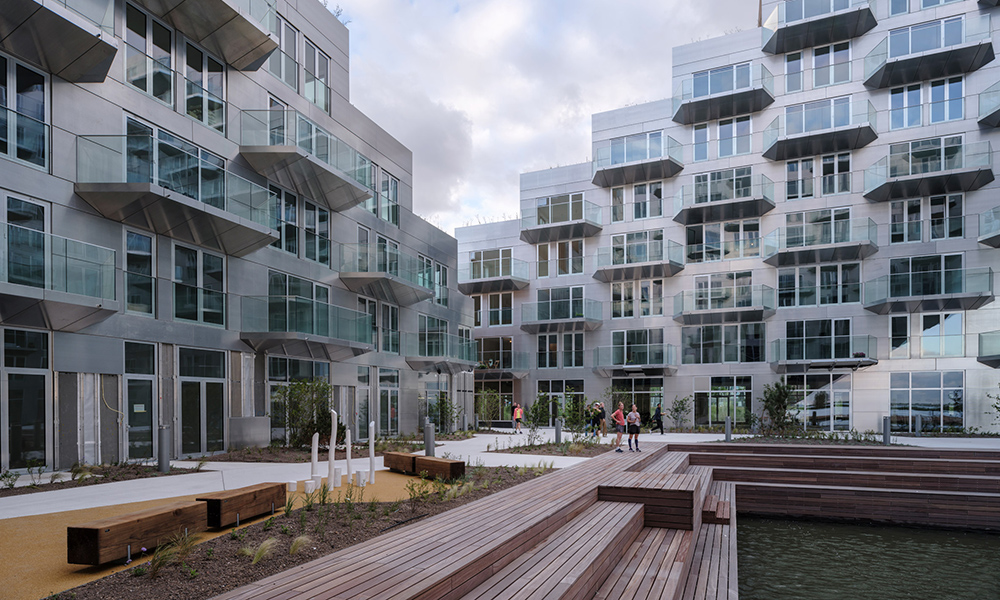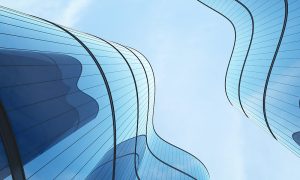Gallery: The energy-positive 49,000m2 ‘Sluishuis’ building
By
Posted on
The new Sluishuis development is a zero-energy building that integrates state-of-the-art environmental techniques and is located in the emerging neighborhood of Ijburg, Amsterdam
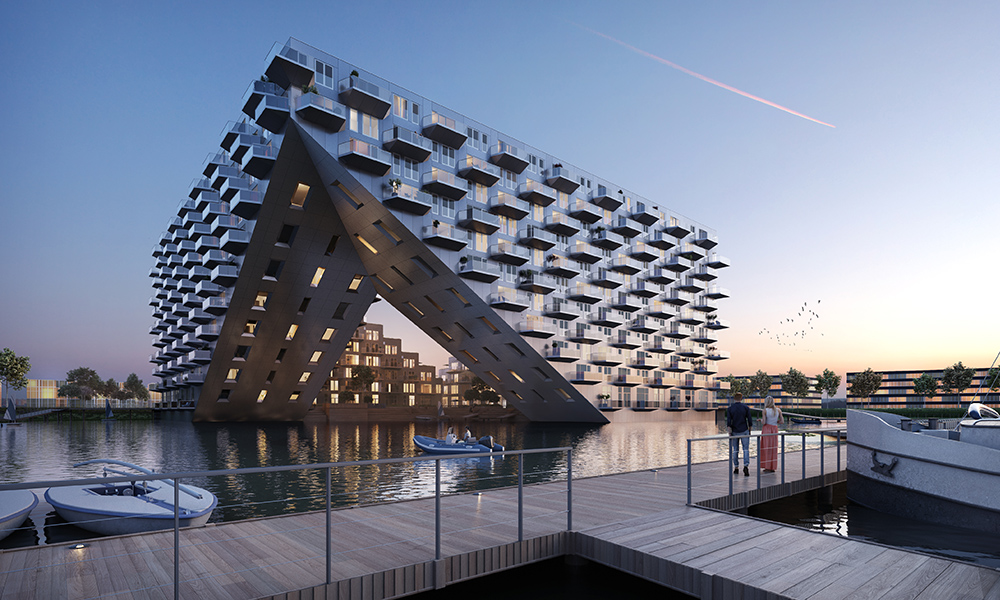
- Following the start of works in 2016, the 49,000m2 Sluishuis residential project was delivered in 2022. The development was designed by Bjarke Ingels Group (BIG) and Barcode Architects, and developed and built by VORM, BESIX Real Estate Development and BESIX Nederland. (Photography: Ossip van Duivenbode)
- Built on the Ij Lake in Amsterdam, in the Netherlands, Sluishuis features 442 energy-neutral residences, a two-story underground car park (below sea-level), houseboats lots, berths for pleasure crafts and commercial areas
- The building’s design packed challenging sustainability parameters, thus several initiatives and techniques were leveraged to make the structure a zero-energy building that performs -0,01 in terms of energy performance. This means the building generates more energy than it will use
- In addition to the use of sustainable building materials, it features: solar panels installed on the roof and one of the islands; ground-coupled heat exchangers; triple-glazed windows; user-dependent space heating; balanced ventilation and a heat recovery system connected to the showers’ discharges
- Sluishuis is said to feature a diverse mix of housing typologies including compact urban studios and water sports apartments. On the top two floors are duplex penthouses with both a relationship with the courtyard and a view over the Ijmeer. All apartments are accessible via the central courtyard. There, the structure’s cantilever and the water welcome you to the building
- The four blocks enclose the courtyard that steps down to the water. On the ground floor, opening up to the courtyard, are a sailing school, a water sports centre and a restaurant with a large terrace. The structure is said to be a building inside the port, with a port inside the building
- With regards to the types of materials used, the building is said to seek contrast as well as a connection with its surroundings. Natural materials were chosen so the building will have a rich and natural appearance over the years. The untreated aluminium façade reflects the water and gives the volume a different appearance at any time of day
- The walkway to the roof is said to offer residents and visitors a spectacular view of the water and the neighbourhood. In contrast to the facade, the stepped roof terraces and the jetty promenade are made of wood, which gives a tactile appearance
- The jetty promenade adds to the development, which features 34 houseboats. The jetty landscape stimulates contact with the water with various mooring places, sitting decks, and floating gardens, the designers said
- Towards the water, the block is lifted up, which forms a large opening that brings water from the Ij Lake into the courtyard and brings daylight and views to the building’s inner apartments
- The classical courtyard building style has been revitalised by two significant transformations; Sluishuis embraces the idea of living on the water and appears different from every vantage point, the designers stated
Read more:
- “We have 93% certainty within the next five years of hitting new temperature highs,” says WSP’s Sophia Kee
- Site Visit: What’s cooking in Sharjah Sustainable City?
- 32 Dubai projects awarded green building certificates by Trakhees

